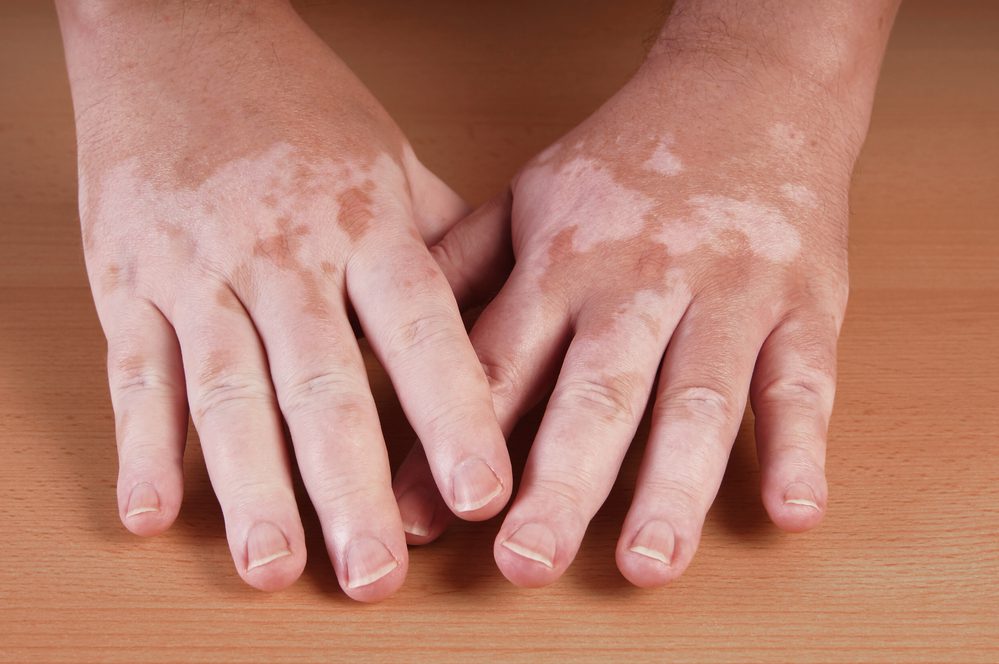Vitiligo is a skin disease that causes skin to lose color in patches, typically getting larger with time.
Any part of the body is susceptible to the disease, including the inside of the mouth and hair.
What Causes Vitiligo?
Vitiligo is caused when cells that create melanin stop working or die.
The disease affects all skin types, and is not contagious, nor does it cause long term health issues.
What Are The Symptoms Of Vitiligo?
Vitiligo Signs and Symptoms Can Include Any Of The Following.
- Loss of skin color in patches
- Loss of tissue color inside the mouth and or nose
- Premature graying or whitening of hair
Are There Treatments For Vitiligo?
Yes, treatment will depends on age, the parts of the body the disease is impacting and how quickly it has spread.
Treatments range from home remedies like tanning, to medications and light-based therapies. If those treatments don’t work, surgery may also be recommended.
Light-Based Therapies are used to slow or even stop the progression of the disease, and can even return skin color in some cases.
Depigmentation light therapy can also be used to remove the remaining color in some cases.
All light therapies should be carefully reviewed with a doctor as they can cause side effects, that are in some cases severe.
Common Vitiligo medications are typically applied topically to the skin and are sometimes used in combination with light therapy to return color to the skin.
Some medications that affect the immune system are also used.
Several new medications are also in development, including a drug to stimulate skin color cells, and another designed to control melanocytes.
Surgery for Vitiligo is usually only used when the treatments above have not worked.
Skin and blister grafting are used to take skin from healthy parts of the body and transfer them to infected patches.
In some procedures, healthy tissue cells are transferred to affected areas to try and restore skin color.
If you or a loved one are experiencing symptoms you believe may be Vitiligo, please consult with a medical professional as soon as possible.





